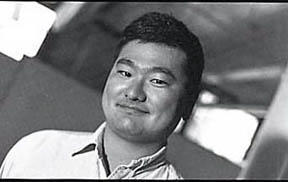Whenever I think about Microsoft, I think about how clever they are to jump into a market at just the precise time, after other companies have laid the groundwork and the industry is just starting to emerge. Think about the browser wars, about streaming media and think about the video game industry, which is one of the fastest growing markets today.
Microsoft wanted to be in the gaming industry – and put millions of dollars on the line to build their own video game console: the Xbox.
Dean Takahaski took his knowledge as a business journalist for 14 years to chronicle his take on the Microsofts gamble with the Xbox. Takahaski is the author of Opening the Xbox: Inside Microsofts Plan to Unleash an Entertainment Revolution.
He currently is a journalist for the San Jose Mercury News and former senior writer for Red Herring magazine as well as the Wall Street Journal, the LA Times, and has appeared on CNN and CNBC.
Not only is Takahaski a journalist and gaming – industry expert – he is a die-hard video gamer for life. He offered me his perspective on what the Xbox is doing for Microsoft.
Q: Your book talks about Microsofts plan for the Xbox and its part in the entertainment revolution. Can you explain the background of the book?
Takahaski: There are four different levels of story in the book. One is about how the game industry is graduating from a sort of cult into mainstream status, moving from a lack of respect to becoming more of an art form. That was some of their original motivation behind the guys who proposed doing the Xbox at Microsoft. They felt like the industry had arrived and it was time for Microsoft to get into it.
Another level of the story was the fighting going on between the super powers of the industry: Microsoft, Sony and Nintendo. There was also another level of contention within Microsoft where that Xbox team had to justify themselves against the Web TV people and the PC advocates as well. The glue of the story, on the most basic level, was this inner conflict within Seamus Blackly, the co-founder of the Xbox, and his need to sort of remake his identity in the wake of failing miserably with one of his ideas for a great game. He crashed and burned on his game and then he decided to hide out at Microsoft and do some good old fashioned programming – and then he came on to this idea to outdo Sony and the PlayStation 2.
Q: How is the Xbox doing?
Takahaski: It did very well in the U.S. when it launched. It sold 1.5 million units in the first six weeks. The problem was it sort of fell flat in Japan and it was overpriced at the outset in Europe. All of this reflects what Microsoft is good at and where its weak. It did a very good job of stoking the technology fires in the U.S., but in the Japanese market they had a very big problem trying to overcome the Nintendo and Sony brand names.
Q: Will the Xbox become a success? Microsoft has put a lot of money and hope in it to become the next Windows.
Takahaski: In a lot of respects, its meeting their goals. The goals that they are outlined in the beginning were to get into the business and have something as close to being sustainable on its own. They still have a ways to go before they can make any money. In fact, the current estimate is they may lose a billion dollars on the Xbox in the current fiscal year. They had just come off a year where they lost $750 million on the launch of the Xbox . But thats peanuts to Microsoft. They have $37 billion in cash, so if they never made another dime, then this Xbox business would drive them out of business in the 37 years. Microsoft has a cash advantage. Sony also has a pile of cash, but not as much as Microsoft.
The long-term goal for Microsoft is to hold off PlayStation 2 from becoming the center of computing in the living room and to also have that position for Microsoft instead. They want to establish this box in the home as an all-things-to-consumers box that will connect online and basically be a computer. Over time, they expect to have this relationship with tens of millions of the most ardent users of technology. Its going to pay off for them in some way – either in commerce or subscriptions to on-line games. Eventually, its going to make them a boatload of money.
Q: So youre saying Microsoft is thinking the office desktop computer stays in the office and the living room is the new opportunity for them to expand their platform, right?
Takahaski: Yes. In their own language they call it the twin pillars of the home.
Q: What type of applications do you see them deploying on that platform over time. Obviously games are what theyre doing right now. What is the bigger strategy?
Takahaski: The Xbox also has a DVD movie playing right now. You buy a $30 attachment and you can watch movies. Over time, when they do the next remake of the Xbox, which could happen sooner in a sort of 1.5 version or maybe an Xbox 2 coming in 2005, the most likely option is they will expand its hard drive that’s already inside and make use of it to record TV shows. They could make it into a TIVO-like machine where it digitally records shows onto a hard drive.
There are some problems with adding more and more capability into the Xbox. You have the possibility that you could lose sight of the original market – the gamers. You put something in there that they dont want. One example is if the hard drive it is being used by a game, and that game needs to take full 100 percent control of the power of that machine, when you reach a pre-recorded point for recording a TV show that starts using the hard drive to record that show, it’s going to slow down the game. Its a matter of figuring out the multitasking software so you can make use of the hard drive simultaneously.
Q: Microsoft strategy does involve some sort of broadband access. How does that change the equation?
Takahaski: Competitively, its an interesting picture because Sony has 56k modem capability. Sony was betting that broadband was going to take off slowly so they have to take care of their customers through modems. Microsoft bet only on broadband. The Ethernet connection is the only port on the machine. They did think in 1999 when they were designing the Xbox, that broadband would be fairly ubiquitous by now – especially by gamers. Maybe 50 percent of the people who bought Xbox have broadband. The other notion is that it would raise the target for game developers to develop better high-quality games that would make use of broadband. It didn’t rely on 56k, so they would get better games and a better playing experience and include more capabilities over the baseline like voice communication over the Internet.
The full audio interview with Dean Takahaski can be heard at www.webtalkguys.com.
Dana Greenlee is a Web designer and co-host of the WebTalkGuys Radio Show, a Tacoma-based talk show featuring technology news and interviews.







